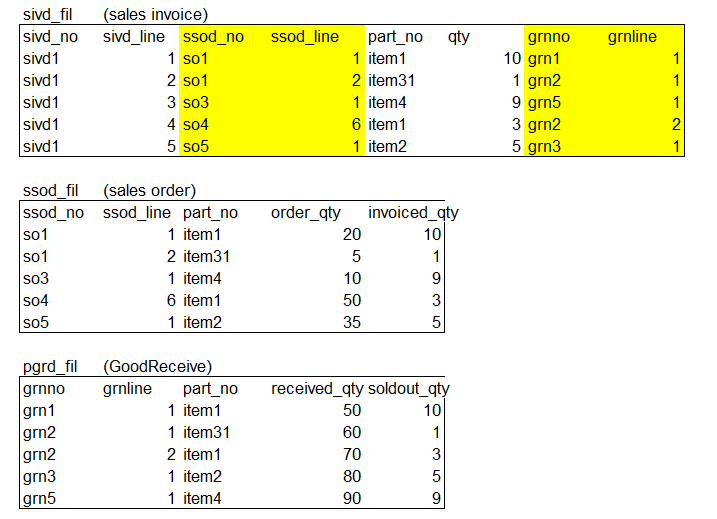I am using Visual Foxpro 7 and foxpro database and foxpro exe is placed on server. user create shortcut from pc to server to use the application.
When updating multiple records of different tables from foxpro Form Save button, data of quantity field holding numeric value of quantity cannot update for some records of these tables.
for example: There is sales invoice sold multiple items - take out quantity from related sales order and good receive.
When delete these multiple sale items from sales invoice, the quantity will be restore back to each sales_order table , and good_receive table relating to individual items.
For the sales invoice of total 10 items which is 10 details records, when delete 5 items, only 3 items of related Sales order and good receive quantity can be restore back and other 2 record never update quantity in sales order and good receive table.
There is no error came up. only data is incorrect in Sales order and good receive table.
I add my code block of processing tables like TableUpdate() in begin and end transaction block along with Aerror() to catch the error. Tables are set buffer mode in form dataEnvironment.
This problem only happen of some records under the same document while the deletion done at the same time for all 5 records. only 2 records out of 5 are wrong.
The problem might be server client connection or any other memory problem or something like this. and i cannot trace it.
Please anybody can help me out.
When updating multiple records of different tables from foxpro Form Save button, data of quantity field holding numeric value of quantity cannot update for some records of these tables.
for example: There is sales invoice sold multiple items - take out quantity from related sales order and good receive.
When delete these multiple sale items from sales invoice, the quantity will be restore back to each sales_order table , and good_receive table relating to individual items.
For the sales invoice of total 10 items which is 10 details records, when delete 5 items, only 3 items of related Sales order and good receive quantity can be restore back and other 2 record never update quantity in sales order and good receive table.
There is no error came up. only data is incorrect in Sales order and good receive table.
I add my code block of processing tables like TableUpdate() in begin and end transaction block along with Aerror() to catch the error. Tables are set buffer mode in form dataEnvironment.
This problem only happen of some records under the same document while the deletion done at the same time for all 5 records. only 2 records out of 5 are wrong.
The problem might be server client connection or any other memory problem or something like this. and i cannot trace it.
Please anybody can help me out.


